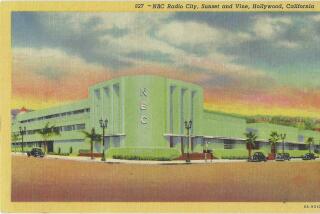Rock ‘n’ Roll Heaven Has Arrived in San Diego : 5 Radio Stations Vie for a Niche in the Market as Advertisers Woo Yuppies
- Share via
SAN DIEGO — The aging of the first generation of rock ‘n’ roll fans has spawned a new generation of rock ‘n’ roll radio stations.
Five San Diego stations are now programming what can loosely be defined as rock ‘n’ roll, a dramatic number given the vast array of musical formats in today’s radio market. It’s as if half a dozen stations suddenly devoted their programming to different forms or eras of classical music, perhaps a “Hits of the 1700s” station competing against “San Diego’s Only Real Classical Station.”
“It’s definitely a new phenomenon,” XTRA-FM (91X) program director Trip Reeb said.
In the last few years, three San Diego stations have entered the battle for the rock ‘n’ roll audience. KCBQ (Eagle 105) boasts of playing the “hits of ’57 to ‘77,” while KGMG-FM (Magic 102) bills itself as San Diego’s “only all classic rock station.” XHTZ (Z90) likes to call its music “civilized rock.”
It might be more appropriate to call it “niche rock.” Each station is programming its own specific style of rock ‘n’ roll in an attempt to target a specific segment of this vast and diverse rock ‘n’ roll audience.
While it has turned the rock radio market into something of a dogfight, the fragmentation and specialization of the various stations can be seen as a major plus for San Diego listeners.
“San Diegans have more options and more variations than anywhere else I looked (when looking for a new job),” said former XTRA-AM program director Jim La Marca, now program director of KGW in Portland, Ore.
For 15 years, the most successful station at attracting San Diego rock listeners has been KGB-FM (101.5), San Diego’s first album-oriented rock station. KGB’s strength is among males age 18-34, rapidly becoming the most powerful audience in terms of advertising dollars.
The only other station that can remotely lay claim to a broad rock audience is XTRA-FM (91X), which programs “cutting edge” rock geared more toward a younger audience. Five years ago, 91X moved into uncharted San Diego rock ‘n’ roll territory by adopting a “Rock of the ‘80s” format, a combination of modern dance and “new wave” music that was gaining in popularity in several U.S. radio markets.
Along with 91X, KGB and the other relatively new rock ‘n’ roll stations, there is an abundance of what the industry labels “adult contemporary” and “Top 40” stations in San Diego battling for listeners 12-45 years old.
Stations like KKLQ (Q106), KFMB-FM (B100) and KKYY-FM (Y95) aim at mainstream audiences, listeners who never quite latched on to the Rolling
Stones or Led Zeppelin, with various middle-of-the-road pop formats and “wacky” deejays. Q106 was the top-rated station overall in the county for the last ratings period, primarily due to its wealth of teen listeners. It programs the type of music likely to be seen on a TV show like “American Bandstand”--safe, danceable music from artists like Whitney Houston, Madonna and the Pet Shop Boys.
Though officials at the adult contemporary stations may argue the point, their formats are not classified as rock ‘n’ roll within the industry and they are not targeting the traditional album-oriented rock listener. At one time, album-rock stations represented the semi-crazed, dark side of radio programming. They played the rock ‘n’ roll that no other stations played. The same crazed maniacs still listen to the rock stations, except now they’re all grown up, and, for radio programmers, there are now several types of rock ‘n’ roll listeners.
Although they don’t like to limit themselves, most of the San Diego rock-oriented stations are aiming for lovers of a specific type of rock ‘n’ roll. It’s a safe, conservative business strategy for stations looking for immediate profits. Instead of taking a risk, hoping a new format will catch on, they can carve out a guaranteed slice from the huge and growing rock ‘n’ roll pie.
“The reason is the business has become so developed and the competition is so keen,” 91X program director Reeb said. “It’s better to be second or third in a specific (age) group than fourth or fifth across the spectrum.”
Advertisers can pick and choose, according to the type of listener they are interested in. They may hit KGB or 91X if they want a relatively broad rock audience, but they can also hit, say, Magic 102 if they’re attempting to target 25- to 40-year-old men in North County.
Local advertising buyers say it is much easier to buy rock ‘n’ roll. It’s not nearly as limiting as it used to be, they say, and enables them to target their audiences more specifically.
Once the radicals of the radio programming dial, the rock ‘n’ roll audience is now the group with the largest “discretionary income,” media buyers say.
“Advertisers have dictated they want the boom generation, the yuppies,” Radio & Records magazine reporter Harvey Kojan said. “This is the best time ever for AOR stations. They are (selling) for records amount of money.”
In San Diego, any discussion of AOR begins and ends with KGB. It is perennially in the top three stations overall in the San Diego market.
“Most people’s tastes are generated in their teen and pre-teen years, and they don’t change that much,” KGB program director Ted Edwards said.
Though KGB’s ratings have fluctuated through the years, the new rock ‘n’ roll stations haven’t really affected KGB’s audience, Edwards said, adding that “the new stations have expanded listening patterns.”
KGB is still the primary buy for advertisers looking to woo the traditional rock ‘n’ roll audience. While the “adult contemporary format” of Q106 dominates the ratings among women, KGB is still tops among male listeners, 12 to 34 years old. Now, however, there are several rock stations specifically targeting the same 12- to 34-year-old males.
“Overall, the level of professionalism has increased drastically” in the San Diego radio market, KGB promotions director Scott Chatfield said. “It’s much more infrequent for the competition to shoot itself in the foot. Before, we could almost win by default.”
The Arbitron ratings show KGB still firmly in control of the rock audience. Z90, which targets 25- to 44-year-old males, pulled only a 1.1 share overall in the last ratings period, compared to a 2.3 share overall for the North County-based Magic 102 and a 4.1 total for the simulcast (broadcasting on both AM and FM) of Eagle 105. In contrast, KGB pulled a 7.4 overall rating and 91X a 5.2.
In one sense, 91X competes more with the adult contemporary Q106 for teen listeners than with KGB. In the last ratings book, Q106 won the female 12-24 age group, followed by 91X and KGB. Of course, it’s hard for a “cutting edge” station, attempting to promote an image as the station playing the radical new music, to program against a station that is playing mainstream pop tunes, which are invariably going to be popular with young listeners, who traditionally latch onto the latest trend.
Reeb’s station, however, is starting to benefit from the same phenomenon that has aided KGB--after five years with its current format, its listeners are starting to grow up. While many listeners have perceived a subtle shift in 91X’s programming--specifically, the playing of more traditional rockers, such as The Who and the Rolling Stones, and emphasizing “resurrection” hits from its own “Rock of the ‘80s” format--91X still has problems competing for the older, traditional rock ‘n’ roll fan. In the overall 18-34 group, it finished fourth behind KGB, Q106 and B100 in the last ratings book.
“I don’t think listeners of that style (KGB) would ever be really happy with us,” Reeb said, although he was unwilling to concede the battle. “Once they graduate from college, a person’s tastes don’t all of a sudden change.”
The average listener, though, cares little about the marketing and demographic theories of the various radio stations. Some are clearly confused by the vast mix of music offered by the different stations. Traditionally, listeners hook up with a station and stick with it until they become disenchanted, or another station lures them away with a promotion. Listening habits, industry experts say, are hard to break.
The relatively new rock stations with focused formats are hoping listeners will tire of the broad mix presented on stations like KGB and 91X.
“Stations like KGB that straddle both eras at some point have to decide which way they want to go, in my opinion,” Magic 102 program director Greg Stevens said. “I don’t think stations like KGB will be able to have listeners 12-54 anymore.”
If anything, the number of niche rock stations is probably destined to increase. There are at least two new syndicated formats not currently represented in San Diego, which are geared toward very specific market niches. Niche 29 is a satellite system aimed at a rock audience in their late 20s. Another format, Z-Rock, is aiming at the teen market.
But no station wants to be viewed as the teeny-bopper station. That’s not where the money is these days.
“Now everyone is trying to get the 25- to 44-year-old, which is ridiculous,” said former XTRA-AM program director La Marca. “Is there room for everyone? No.”
Only the market can decide whether San Diego is over-saturated with rock stations. If the different rock formats are still around in six months, a year, then it will be clear that San Diegans truly love their rock ‘n’ roll.
More to Read
The biggest entertainment stories
Get our big stories about Hollywood, film, television, music, arts, culture and more right in your inbox as soon as they publish.
You may occasionally receive promotional content from the Los Angeles Times.










